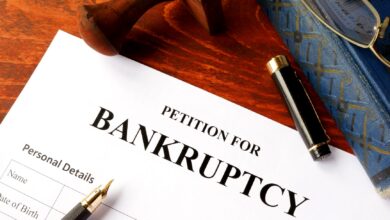In California, Who Is Held Liable for Scaffold Accidents?

Construction sites are bustling environments where safety should never be compromised. Among the myriad risks, scaffold accidents stand out due to their frequency and the severity of injuries they can cause. In California, a state with strict safety rules, figuring out who is responsible for scaffold accidents is very important for workers, contractors, and business owners. This article explores the complex duties and laws related to scaffold accidents in California.
Read More: Mississippi Rising: Overcoming Legal Obstacles After an Accident
Understanding Scaffold Safety Regulations
California’s commitment to construction safety is evident through its adoption of both federal Occupational Safety and Health Administration (OSHA) standards and state-specific regulations. These rules need us to be careful with safety. They ask for the right building, upkeep, and inspection of scaffolds. The aim is to keep scaffolds safe for all and cut down on accidents. Compliance with these standards is not just a matter of legal obligation but a fundamental aspect of ensuring worker safety.
Identifying Potential Liable Parties
When a scaffold accident occurs, multiple parties could be held liable, depending on the circumstances surrounding the incident. Generally, the liability can fall on the shoulders of the property owners, contractors (both general and subcontractors), scaffold companies, or even manufacturers of the scaffolding equipment. Determining liability hinges on each party’s role in the scaffold’s construction, maintenance, and use. For instance, if the accident was due to faulty equipment, the manufacturer could be liable. Conversely, if the accident resulted from improper assembly or maintenance, the contractor or subcontractor might be held responsible.
The Role of Workers’ Compensation
In many cases, workers injured in scaffold accidents are eligible for workers’ compensation, which provides medical benefits and compensation for lost wages. The makers of this system wanted to make it easier for hurt workers to get benefits. They made it so workers don’t have to show someone was at fault. However, workers’ compensation also typically bars employees from suing their employers directly for negligence. This does not mean that other liable parties are exempt from legal action. Injured workers can still make claims against others whose lack of care helped cause the accident.
Legal Avenues for Compensation
For those not covered by workers’ compensation or in cases where third-party liability is a factor, personal injury lawsuits may be a viable option. For these legal claims, the injured person must show that the other party’s carelessness played a part in the accident. This could involve showing that the party failed to adhere to safety regulations, did not provide adequate training, or neglected to maintain the scaffolding properly. Winning a court case can help pay for medical bills, lost wages, pain, and other losses. After a scaffold accident in California, it’s important to understand the safety rules, workers’ comp laws, and how to sue for personal injury. Figuring out who is to blame involves looking closely at who did what in building and keeping up the scaffolding.
Read More: Who is At Fault After a Car Accident in Florida?
Scaffold mishaps in California remind us to always follow safety rules. They also show that figuring out who made a mistake can be tough. With multiple parties potentially at fault, from property owners to equipment manufacturers, the path to compensation can be intricate. Understanding accident laws, such as workers’ compensation and personal injury, is very important when it comes to safety. The aim is to maintain safe construction sites, minimize risks, and provide assistance following accidents.









